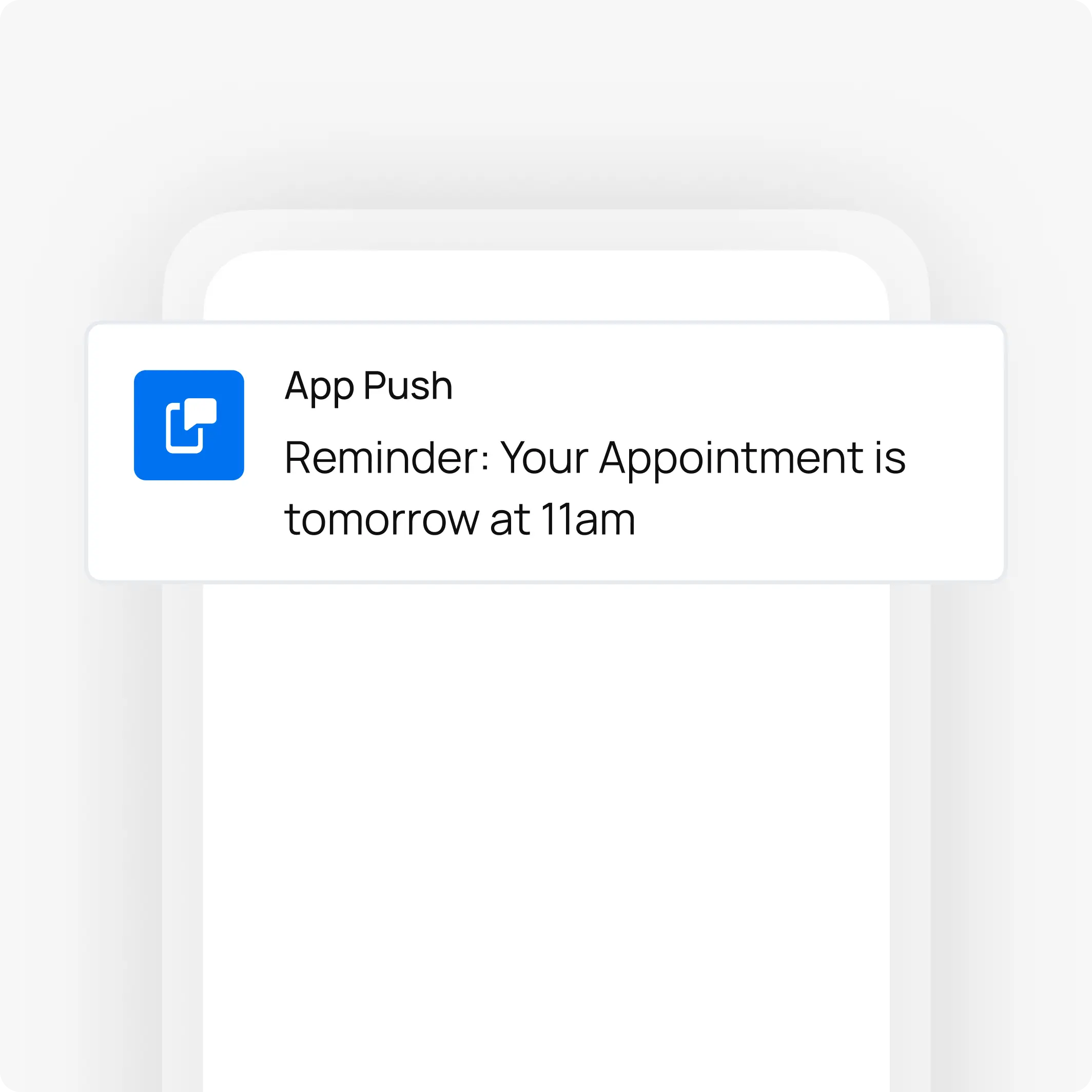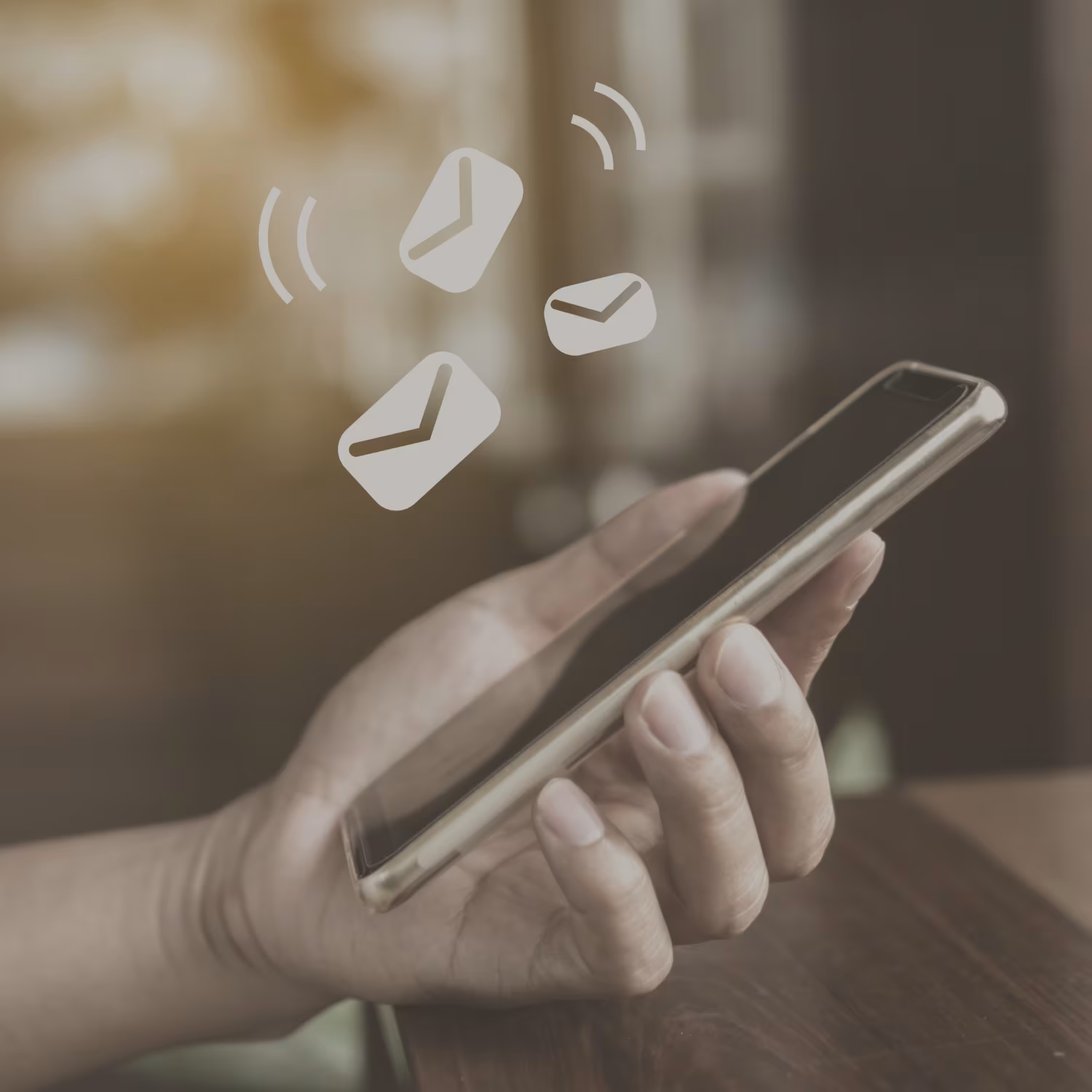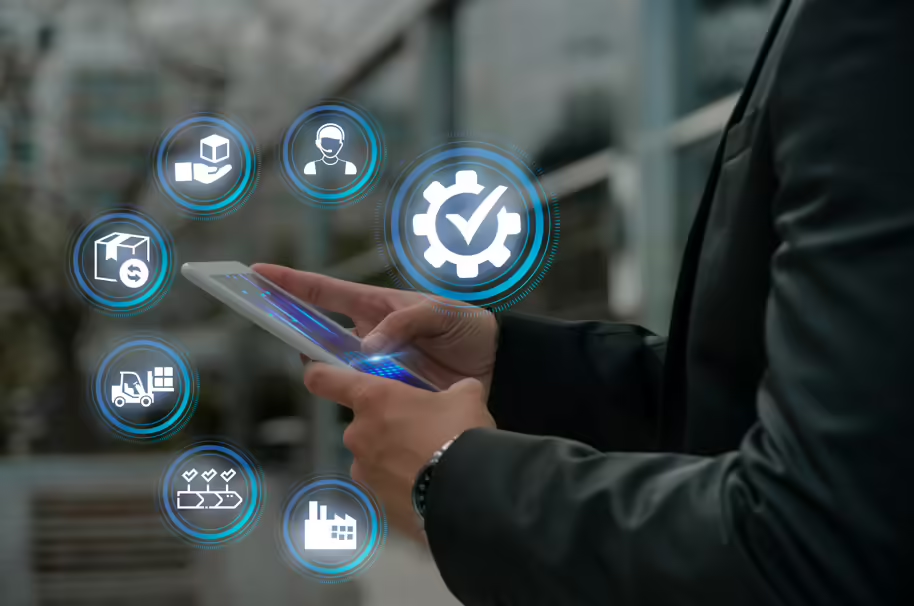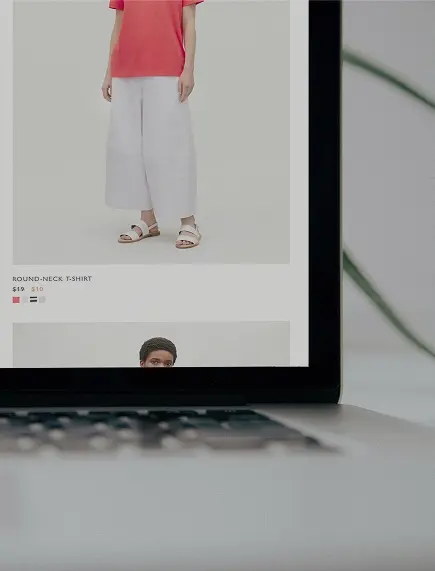15 Best Push Notification Strategies to Boost Engagement in 2025


I. Introduction
In the digital arena of 2025, user attention is the most valuable and fiercely contested currency. The average person spends several hours a day on their smartphone, a device that has become the central hub of their personal and professional lives. Yet, this constant connectivity has created a paradox for marketers. While we have an unprecedented opportunity to connect with our audience, we are also competing with a relentless barrage of emails, social media updates, news alerts, and messages from friends and family. In this cacophony of digital noise, the push notification stands out as one of the most powerful and direct lines of communication a brand can have with its customer. It’s a message that lands directly on the most personal piece of real estate a consumer owns: their device’s home screen. When used correctly, it can cut through the clutter, deliver immediate value, and foster a deep, lasting connection with your audience.
However, this power is a double-edged sword. The very directness that makes push notifications so effective also makes them incredibly intrusive when misused. We’ve all experienced the dark side of this channel: the irrelevant promotions, the incessant and annoying alerts, the generic blasts that feel like spam. This has led to a phenomenon known as “notification fatigue,” where users, overwhelmed by the constant buzzing and beeping, become conditioned to ignore, dismiss, or, in the worst-case scenario, completely disable notifications from an app. A single poorly-timed or irrelevant message can be the final straw that leads a user to opt-out forever or, even more damagingly, uninstall your app entirely. The stakes are incredibly high. Sending a push notification isn’t just a marketing action; it’s an interruption of someone’s day, and that interruption must be justified with clear, tangible value.
This is why a strategic approach is no longer just a best practice; it is an absolute necessity for survival and success. The era of “batch and blast” is over. The future of mobile engagement belongs to brands that treat push notifications not as a megaphone to shout their own message, but as a tool for meaningful, one-to-one conversation. It’s about delivering the right message, to the right person, on the right channel, at the exact right moment. This guide is designed to be your definitive playbook for achieving that level of strategic excellence. We will move beyond the basics to explore the psychology, technology, and creativity behind notifications that delight, not annoy. We will provide a comprehensive guide to crafting effective push notifications that add value, boost engagement, and drive conversions, culminating in 15 actionable, cutting-edge strategies you can implement to win the battle for your users’ attention in 2025 and beyond.
II. Foundational Questions Answered
Before diving into advanced strategies, it’s essential to build a solid foundation of understanding. The term “push notification” is widely used, but the nuances of what they are, how they function, and where they fit into a modern marketing mix are often misunderstood. Answering these fundamental questions is the first step toward mastering this powerful channel and wielding it with precision and purpose.
A. What are push notifications?
At their most basic level, push notifications are short, clickable pop-up messages sent from a third-party application that appear on a user’s device. The defining characteristic is that they can be delivered at any time; the user does not need to have the app open or be actively using their device to receive one. They are a form of app-to-user communication that operates outside the application itself. The mechanism behind them is a fascinating interplay between your app’s server, the device’s operating system (OS), and the app installed on the device. When you want to send a notification, your server sends the message payload (the text, images, etc.) to a Push Notification Service maintained by the OS developer (e.g., Apple Push Notification Service for iOS or Firebase Cloud Messaging for Android). This service then pushes the message to the specific user’s device, where the OS displays it on the lock screen, in the notification center, or as a banner at the top of the screen. This system is highly efficient and allows for the instant delivery of information. It’s crucial to differentiate between the two main types: Mobile App Pushes, which are sent from a native app installed on a smartphone or tablet, and Web Pushes (or Browser Pushes), which are sent from a website to a user’s desktop or mobile browser, even when the website is not open in a tab.
B. What are push notifications in marketing?
In a marketing context, push notifications are a high-engagement, permission-based direct communication channel. They are the digital equivalent of a tap on the shoulder, used to deliver timely, relevant, and valuable information directly to users who have explicitly granted permission to receive them. This “opt-in” nature is what distinguishes them from more intrusive forms of advertising. Their strategic role is multifaceted and can be applied across the entire marketing funnel. For awareness, a publisher might send a breaking news alert. For consideration, an e-commerce app could send personalized product recommendations. For conversion, a flash sale notification creates urgency to drive immediate purchases. And for retention and loyalty, a well-timed message can re-engage a dormant user or reward a loyal customer. The ultimate goals are to increase user engagement with your app or website, drive traffic to specific pages or products, promote offers and events, and ultimately, to build a stronger, more immediate brand relationship that keeps your business top-of-mind.
C. What is an example of a push notification?
The best way to understand their power is to see them in action. A great push notification is a masterful blend of timing, personalization, and utility. For instance, in E-commerce, the message: “Flash Sale Alert! ⚡ Get 25% off all sneakers for the next 3 hours only. Tap to shop!” is highly effective because it leverages urgency (3 hours only) and specificity (sneakers) to prompt immediate action. In the Media/News industry, “BREAKING: The Federal Reserve has just announced a change in interest rates. Read the full story now,” works because it delivers on the promise of timely, valuable information that the user has opted in for. For Travel, a notification like, “Your flight to London is now boarding at Gate B12. Have a wonderful trip!” is a perfect example of utility. It’s not a promotion; it’s a helpful service that enhances the customer’s experience. In the world of Social Media, “Jane Doe and 2 others liked your new photo,” leverages social proof and our innate desire for validation to draw us back into the app. Finally, a Fintech app might send, “Your credit score has changed. Tap to see your new report,” which combines personalization and curiosity to drive engagement with a key app feature.
D. Is push notification marketing a form of direct marketing?
Yes, unequivocally. Push notification marketing is a quintessential form of direct marketing in the digital age. Direct marketing is defined by its method of communicating directly with a target customer, bypassing traditional mass media intermediaries like television or print. Push notifications fit this definition perfectly. They establish a direct, one-to-one line of communication between a brand and an individual on their most personal device. Unlike a billboard or a TV ad that speaks to a broad audience, a push notification speaks to a single user who has been identified and has given consent. It shares key characteristics with other direct channels like email and SMS marketing, but with its own unique advantages. While email can get lost in a cluttered inbox and SMS can feel invasive for promotional content, push notifications have unparalleled visibility on the device’s lock screen. This immediacy makes them incredibly potent, but also requires a higher degree of relevance and respect for the user’s attention to be effective.
E. How effective are push notifications?
When executed strategically, push notifications are one of the most effective channels in a marketer’s toolkit. The data consistently demonstrates their power. Click-through rates (CTRs) for push notifications can be significantly higher than for email, often ranging from 4% to 10% or even higher for highly personalized messages, compared to the typical 2-3% CTR for email. Their impact on retention is even more dramatic. Studies have shown that users who have enabled push notifications are far more likely to remain active users; some businesses see app retention rates nearly double for users who opt-in. For e-commerce, their effectiveness is undeniable. Push notifications reminding users of an abandoned cart can recover a significant percentage of otherwise lost sales, with some reports showing conversion rates as high as 25% for these specific campaigns. However, effectiveness is not guaranteed. It is directly correlated with the quality of the strategy. Personalized pushes, for example, can see up to a 4x lift in open rates compared to generic blasts. The key takeaway is that their potential is enormous, but that potential is only unlocked through a commitment to delivering value, relevance, and personalization in every message.

II. Why indigitall’s Push Notifications Stand Out
In a crowded market of push notification providers, simply having the ability to send a message is no longer enough. The difference between a basic tool and a truly powerful platform lies in the intelligence, flexibility, and strategic capabilities that surround the notification itself. This is where indigitall distinguishes itself, moving beyond the simple act of sending pushes to become an intelligent orchestration engine for customer engagement. indigitall understands that a push notification is rarely a standalone event; it’s a single, critical touchpoint in a much larger, ongoing customer journey. The platform is built from the ground up to make every one of those touchpoints smarter, more personal, and more effective. This is achieved through a suite of advanced features that work in concert to deliver a superior experience for the user and superior results for the marketer.
Let’s explore the key differentiators that make indigitall’s push notification capabilities a cut above the rest:
- AI-Powered Optimization: The single biggest factor in a push notification’s success is timing. Sending a promotion at 3 AM is useless, but the “perfect time” is different for every user. indigitall’s AI-powered optimization engine solves this problem. By analyzing each user’s historical engagement data—when they open the app, when they click on notifications, when they make purchases—the AI learns their unique behavioral patterns. It then uses this intelligence to automatically schedule and deliver each notification at the optimal moment for that specific individual, dramatically increasing the likelihood that the message will be seen and acted upon. This moves beyond simple time-zone scheduling to true one-to-one temporal personalization.
- Rich Media & Interactivity: The human brain processes images 60,000 times faster than text. A plain text notification can easily be ignored, but one with a vibrant image, a short video, or an animated GIF immediately captures attention. indigitall’s platform makes it easy to incorporate this rich media, transforming a simple alert into a visually compelling micro-experience. Furthermore, it supports interactive buttons that go far beyond a simple “click here.” You can add buttons for quick polls (“Did you like this product? Yes/No”), direct actions (“Add to Cart,” “Book Now”), or to trigger other events. This interactivity turns a passive message into an active conversation, boosting engagement rates and providing valuable, zero-party data back to the business.
- Advanced Segmentation & Personalization: Generic, one-size-fits-all notifications are the primary cause of user churn. indigitall provides a deeply sophisticated segmentation engine that allows marketers to group users based on a virtually limitless combination of attributes and real-time behaviors. You can create segments based on demographics, location, purchase history, in-app behavior (e.g., “users who have viewed a specific product category three times this week”), or even predictive traits (e.g., “users at high risk of churning”). Once segmented, each message can be personalized with dynamic content, such as the user’s first name, the name of a product they recently viewed, or their loyalty point balance, ensuring every notification feels relevant and tailor-made for the recipient.
- Omnichannel Integration: indigitall’s most powerful differentiator is its philosophy that push notifications should not exist in a silo. They are one instrument in a full orchestra of communication channels. The platform allows you to design and automate complete customer journeys that seamlessly weave together multiple touchpoints. For example, a journey could begin with a push notification. If the user doesn’t engage with it, the system can automatically follow up with an email an hour later. The next time they open your app, they could be greeted with a personalized in-app message that references the initial offer. This omnichannel approach ensures your message is reinforced across channels, creating a cohesive and persistent customer experience that is managed and tracked from a single, unified platform.
- Encrypted Push Notifications: For industries that handle sensitive user data, such as banking, finance, insurance, and healthcare, security is non-negotiable. Standard push notifications are not always secure enough for transmitting confidential information. indigitall offers encrypted push notifications, providing an end-to-end layer of security that ensures sensitive data—like account balances, medical appointment reminders, or authentication codes—is protected in transit. For healthcare organizations, combining secure notifications with Cloud-based GRC solutions for healthcare is essential to strengthen compliance, manage risk, and maintain HIPAA standards. This commitment to security builds critical trust with users and ensures compliance with data protection regulations like GDPR and HIPAA, making it an essential feature for any security-conscious organization.

IV. 15 Best Push Notification Strategies for 2025
Having a powerful tool is only half the battle; knowing how to use it is what separates the novices from the experts. A successful push notification strategy is built on a foundation of creativity, psychology, and a relentless focus on providing value. We’ve compiled 15 of the most effective, battle-tested strategies that will help you cut through the noise, engage your audience, and drive meaningful results.
A. E-commerce & Sales-Driven Strategies
- The Abandoned Cart Reminder:
- Psychology: This strategy combats simple forgetfulness and purchase friction. By reminding users of items they’ve already shown high intent to buy, you re-capture their interest at a critical moment.
- Pro-Tip: Don’t send the reminder immediately. Wait 1-4 hours. Create a sequence: the first push is a simple reminder, a second push 24 hours later could include a small incentive like free shipping to create urgency.
- Example: “Still thinking it over? 🤔 Your items are waiting for you. Complete your purchase before they’re gone!”
- Price Drop & Back-in-Stock Alerts:
- Psychology: This empowers the user, turning a notification from an interruption into a desired service. It builds trust and provides immense value by delivering exactly the information the user asked for.
- Pro-Tip: Make it easy for users to opt-in to these alerts on the product page. Use rich media to show an image of the product in the notification itself.
- Example: “Good news! ✨ The Classic Leather Jacket you love is back in stock. Tap to get yours before it sells out again!”
- Flash Sales & Limited-Time Offers:
- Psychology: This leverages the principle of scarcity and Fear Of Missing Out (FOMO). A short time window compels users to act now rather than later.
- Pro-Tip: Be specific about the timeline and the offer. Use emojis to grab attention and convey excitement. Segment the offer to users who have shown interest in that product category.
- Example: “FLASH SALE! ⚡ 30% off everything for the next 2 hours only. Your weekend look is calling. Shop now!”
- Personalized Product Recommendations:
- Psychology: This strategy makes the user feel seen and understood. By using their data to offer relevant suggestions, you’re acting as a helpful personal shopper, not a generic advertiser.
- Pro-Tip: Base recommendations on more than just one action. Combine browsing history, past purchases, and even items they’ve added to a wishlist for hyper-relevant suggestions.
- Example: “Love your new running shoes? 👟 Complete the set with our top-rated moisture-wicking socks. Check them out!”
- Post-Purchase Follow-up:
- Psychology: This builds trust and reduces post-purchase anxiety. Providing proactive shipping and delivery updates shows you care about the customer’s experience even after the sale is complete.
- Pro-Tip: This is a great opportunity to ask for a review, but time it correctly. Wait a few days after the item has been delivered to give them a chance to use it.
- Example: “Great news! Your order has been delivered. We hope you love it! Let us know what you think?”
B. Engagement & Retention Strategies
- The Welcome Push:
- Psychology: This sets the tone for your relationship and combats initial user drop-off. A good welcome push makes users feel valued and guides them toward the “aha!” moment of your app.
- Pro-Tip: Don’t just say “Welcome.” Prompt them to take one key action that will improve their experience, like setting up their profile or personalizing their preferences.
- Example: “Welcome to the club! 🎉 To get the best recommendations, tell us your top 3 interests. It only takes 30 seconds!”
- Gamification & Rewards:
- Psychology: This taps into our innate desire for achievement and competition. Notifying users of progress creates a satisfying feedback loop that encourages repeat behavior.
- Pro-Tip: Make the rewards tangible and the progress clear. Link directly to their rewards dashboard or the next challenge.
- Example: “You did it! You’ve earned the ‘Early Bird’ badge. 🏅 Keep it up to unlock your next reward!”
- Re-engagement Campaigns:
- Psychology: This strategy acknowledges that users get busy and sometimes just need a gentle, friendly nudge to remind them of the value your app provides.
- Pro-Tip: Avoid guilt-tripping language. Be warm and inviting. Remind them of what’s new or what they’ve been missing. A small incentive can work wonders here.
- Example: “It’s been a while! We’ve missed you. Check out the new features we’ve added since you’ve been gone.”
- Ask for Feedback & Ratings:
- Psychology: This shows that you value your users’ opinions and are committed to improving their experience. It also provides invaluable feedback for your product roadmap.
- Pro-Tip: Be smart about who you ask. Target users who are highly engaged or have recently completed a positive action (like making a purchase or completing a level).
- Example: “Enjoying the app? A quick rating would mean the world to us. It helps us keep making things better for you!”
- Location-Based (Geofencing) Offers:
- Psychology: This creates a “serendipitous” moment by delivering a hyper-relevant offer at the exact time and place it’s most useful. It feels less like an ad and more like a helpful tip.
- Pro-Tip: Use this sparingly to avoid being creepy. Ensure the offer is genuinely valuable. A great use case is for event reminders or click-and-collect order notifications.
- Example: “Hey! You’re near our downtown store. Pop in and get a free coffee with any purchase. ☕”
C. Content & Information Strategies
- Breaking News & Live Event Updates:
- Psychology: This positions your app as an essential, go-to source for timely information. It fulfills a user’s need to stay informed and “in the know.”
- Pro-Tip: Allow users to subscribe to specific topics so they only receive alerts they truly care about. Speed is critical here.
- Example: “BREAKING: The home team just won the championship in the final seconds! Watch the highlights now.”
- New Content Alerts:
- Psychology: This provides a direct path back to your app by notifying users that there is fresh, valuable content waiting for them.
- Pro-Tip: Personalize these alerts based on the user’s content consumption history. If they always read articles about finance, don’t send them alerts about sports.
- Example: “A new guide just dropped! 📖 Our ‘Ultimate Guide to Investing for Beginners’ is now live. Start reading.”
- Personalized Content Digests:
- Psychology: This respects the user’s time by curating the most relevant content for them into a single, convenient notification, preventing them from feeling overwhelmed.
- Pro-Tip: Frame this as an exclusive, curated service. Send it at a consistent time, like every Friday morning, so users come to expect and look forward to it.
- Example: “Your weekly digest is here! 📰 Here are the top 3 articles you might have missed this week based on your interests.”
- Transactional & Account Alerts:
- Psychology: This is the ultimate trust-building strategy. These notifications are purely functional and provide essential information, demonstrating that your app is a reliable and helpful utility.
- Pro-Tip: Never mix promotional content with transactional alerts. Keep them clean, clear, and focused on the information the user needs.
- Example: “Security Alert: A new device has logged into your account. If this wasn’t you, please secure your account now.”
- Onboarding & Feature Discovery:
- Psychology: This helps users get the most value out of your app by educating them over time. Many users are unaware of an app’s full capabilities; these pushes act as a helpful guide.
- Pro-Tip: Trigger these notifications contextually. If a user has just used a basic feature for the third time, send a push that introduces them to a related advanced feature.
- Example: “Pro-Tip: Did you know you can create custom playlists? 🎧 Tap here to learn how and organize your favorite tracks.”
V. Conclusion
As we’ve journeyed through the intricate world of push notifications, from their foundational mechanics to advanced, psychologically-driven strategies, a single, unifying principle emerges: the era of interruption marketing is over. In 2025, success is not determined by who can shout the loudest or send the most messages. It is earned by brands that understand the profound privilege of being granted access to a user’s personal device and honor that privilege with every interaction. The modern consumer has a finely tuned radar for anything that wastes their time or insults their intelligence. They will not tolerate generic, self-serving, one-size-fits-all communication. The key takeaway from these 15 strategies is that every push notification must pass a simple but critical test: Does this message provide genuine, timely, and personal value to the recipient? If the answer is no, you shouldn’t send it.
The most successful marketers will be those who master the art of strategic empathy. They will leverage the incredible power of platforms like indigitall not to automate spam, but to automate personalization and relevance at a scale that would be impossible for a human team to manage alone. They will use AI to understand individual user habits, not to exploit them, but to serve them better. They will use rich media and interactivity not as gimmicks, but as tools to create more engaging and human conversations. And they will view the push notification not as an isolated tactic, but as a vital thread in the rich, omnichannel tapestry of the modern customer journey. The goal, ultimately, is to transform your notification strategy from a series of disconnected announcements into a single, coherent, and ongoing dialogue that builds trust and fosters genuine brand loyalty over time.
In the end, the most profound shift is one of mindset. We must move from thinking like advertisers to thinking like helpful personal assistants. The goal is not to shout the loudest, but to whisper the right message at the right time. It’s about being the brand that sends a shipping update exactly when the customer is wondering where their package is. It’s about being the app that reminds a user of an abandoned cart with a helpful nudge, not a demanding command. It’s about being the publisher that delivers a breaking news alert that a user is genuinely grateful to receive. This is the new standard for excellence. We encourage you to take a hard, honest look at your current push notification strategy. Are you adding to the noise, or are you cutting through it with value? By implementing the strategies outlined in this guide and partnering with intelligent platforms that enable true personalization, you can ensure that every tap on your user’s shoulder is a welcome one, building a stronger, more resilient brand in the process.












